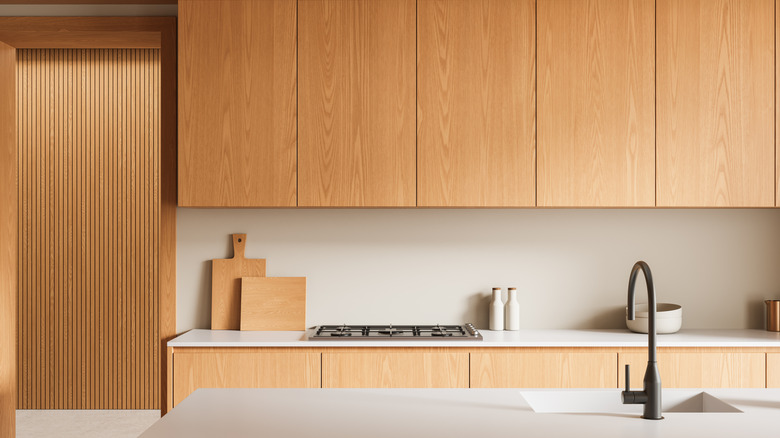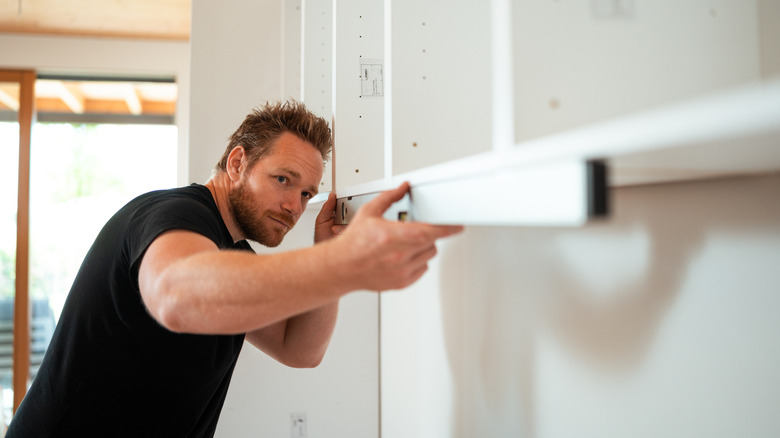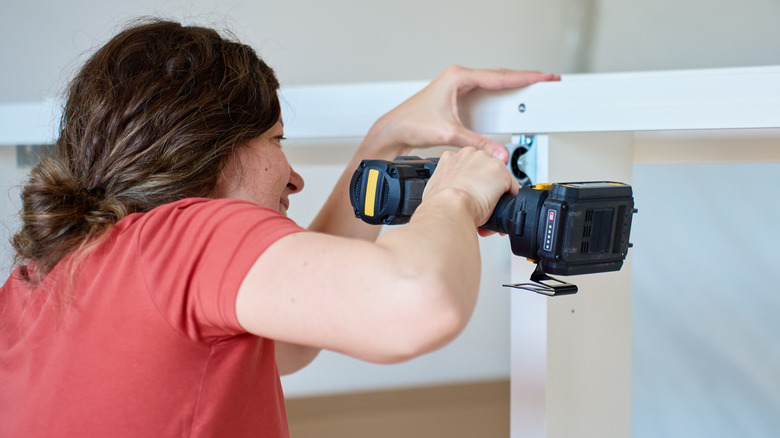The Tell-Tale Sign Your Kitchen Cabinet Will Collapse (And How To Fix It)
We may receive a commission on purchases made from links.
Like everything else in your home, kitchen cabinet hardware degrades over time and requires maintenance. Unlike many other things in your home, if your cabinets collapse, they can cause serious damage to both the wall and anyone who happens to be standing under them. To avoid injury to your person and damage to your drywall, look for what's called gapping — when the cabinet begins to pull away from the wall due to weight or the screws loosening.
According to the Premises Safety group at Robson Forensic, another initial clue that your cabinets are in danger of falling is usually drywall dust beneath where the cabinet is installed. Loose drywall dust, which typically looks like fine, white particles, indicates that gaps have started to form between the wall and the back of the cabinet. Once gaps have formed, your cabinet is in imminent danger of collapse. You might be panicking, especially if you've invested in a kitchen remodel, as cabinets are usually the most expensive part, but don't worry. The solutions are straightforward, allowing you to remedy the issue before it tears apart your kitchen.
What causes gapping
The most common cause of gapping in cabinets is improper installation. During installation, cabinets should be anchored into the wall studs – the wooden boards that form the frame of your home. If necessary, the cabinets can be fastened using some drywall screws in areas where there are no studs, but they cannot be fastened only into drywall. Proper anchors, such as toggle bolts or heavy-duty drywall anchors, must be used. Without the proper anchors or the support of studs, the weight of the cabinets will pull them forward, creating gaps.
Another cause of gaps is door misalignment. If the cabinet doors were not aligned or square during installation, or if they have lost alignment over time, the uneven weight stresses the wall anchor points, causing the cabinets to sag downward. Once you have noticed the gap between your cabinets and the wall, it's time to get out your drill, or hire a home remodeling contractor to do the drilling for you
How to fix cabinets before they collapse
Whether it's you or a professional tackling the issue, there are a few solutions to gapping. Begin by locating all the studs on the affected wall and re-screwing the cabinets into them with longer screws. If there are still gaps left, fill them with construction adhesive such as the Loctite Power Grab Express Heavy Duty Construction Adhesive.
This can be a great time to refinish your cabinets, allowing you to realign them, cover any damage left by the repair process, and give your kitchen an updated look. There are a few different ways you can approach kitchen cabinet refinishing for a stunning refresh, making it a simple and cost-effective way to increase your home's value. In extreme cases, it might be best to remove and reinstall the cabinets to ensure they are properly aligned and secure. A cabinet installation professional can give you advice for your unique situation and provide a quote for the associated costs.


